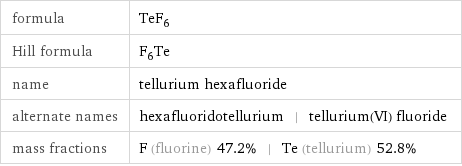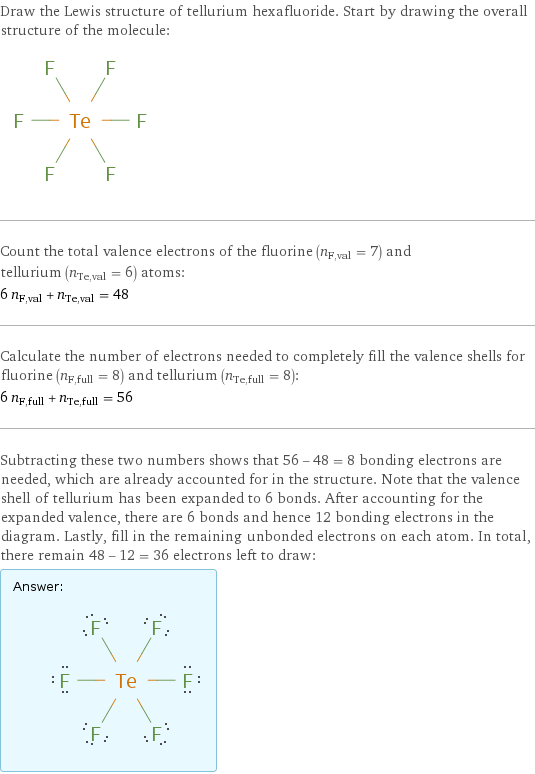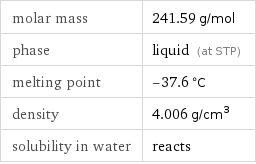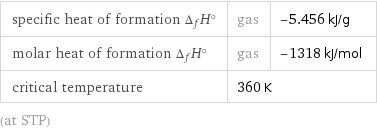Input interpretation

tellurium hexafluoride
Chemical names and formulas

formula | TeF_6 Hill formula | F_6Te name | tellurium hexafluoride alternate names | hexafluoridotellurium | tellurium(VI) fluoride mass fractions | F (fluorine) 47.2% | Te (tellurium) 52.8%
Lewis structure

Draw the Lewis structure of tellurium hexafluoride. Start by drawing the overall structure of the molecule: Count the total valence electrons of the fluorine (n_F, val = 7) and tellurium (n_Te, val = 6) atoms: 6 n_F, val + n_Te, val = 48 Calculate the number of electrons needed to completely fill the valence shells for fluorine (n_F, full = 8) and tellurium (n_Te, full = 8): 6 n_F, full + n_Te, full = 56 Subtracting these two numbers shows that 56 - 48 = 8 bonding electrons are needed, which are already accounted for in the structure. Note that the valence shell of tellurium has been expanded to 6 bonds. After accounting for the expanded valence, there are 6 bonds and hence 12 bonding electrons in the diagram. Lastly, fill in the remaining unbonded electrons on each atom. In total, there remain 48 - 12 = 36 electrons left to draw: Answer: | |
Basic properties

molar mass | 241.59 g/mol phase | liquid (at STP) melting point | -37.6 °C density | 4.006 g/cm^3 solubility in water | reacts
Units

Liquid properties (at STP)

density | 4.006 g/cm^3
Units

Thermodynamic properties

specific heat of formation Δ_fH° | gas | -5.456 kJ/g molar heat of formation Δ_fH° | gas | -1318 kJ/mol critical temperature | 360 K | (at STP)
Chemical identifiers
(F)(F)(F)F InChI identifier | InChI=1/F6Te/c1-7(2, 3, 4, 5)6 EU number | 232-027-0 Gmelin number | 2601 RTECS number | WY2800000](../image_source/47cdb772c74ca6027cba5c54b1829376.png)
CAS number | 7783-80-4 PubChem CID number | 24559 SMILES identifier | F[Te](F)(F)(F)(F)F InChI identifier | InChI=1/F6Te/c1-7(2, 3, 4, 5)6 EU number | 232-027-0 Gmelin number | 2601 RTECS number | WY2800000
NFPA label

NFPA label

NFPA health rating | 2
Toxicity properties

RTECS classes | other